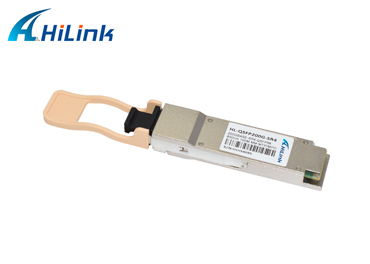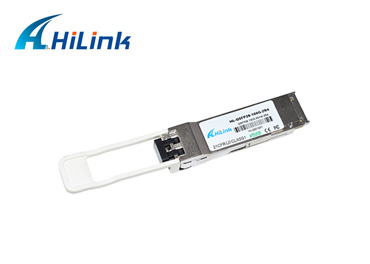How Are Transceiver Modules Classified?
Jan. 11, 2023
Types of transceiver modules can be classified into different categories based on their performance characteristics and end-use. Common features used to classify fibre optic transceivers include: fibre mode, transmission rate, transmission distance, wavelength and connector type. Each of these categories is discussed in more detail below.
Fibre optic transceiver modules with similar features are further grouped together and classified into packages, also known as form factors. There are 6 main form factors commonly used today for fibre optic transceivers: SFP+, SFP, GBIC, X2, XFP, XENPAK and increasingly popular are QSFP+ for 40Gbps and CFP for 100Gbps transceivers.
Fibre mode
Perhaps the most basic classification of a fibre optic transceiver is the 'mode type' of fibre it is intended to use. The two basic classifications of fibre mode types are multimode and Singlemode. Multimode fibres, which typically have core diameters in the range of 50 to 62.5 microns, have significantly larger core diameters than single-mode fibres with core sizes in the range of 8 to 9 microns.
Hilink 200G QSFP56 SR4 Optical Transceiver
Multimode fibres have a larger core aperture, allowing multiple modes of light to be coupled into the fibre. These different modes of light propagate at slightly different speeds as they travel along the fibre. The result is a 'spreading' of the pulses, called modal dispersion. This type of multimode-specific dispersion severely limits the transmission distances that can be achieved with multimode fibres compared to single-mode fibres.
Single-mode fibres, as the name suggests, allow only a single mode of light to be coupled into the core. This completely eliminates the problem of modal dispersion. Single-mode fibre transmission is limited by several other forms of dispersion, notably chromatic and polarisation modes. However, these are much "weaker" forms of dispersion, allowing single-mode fibres to support transmission distances several orders of magnitude longer than multimode fibres.
The most common type of single-mode fibre is referred to by the ITU as 'OS1', also known as 'standard single-mode fibre'. Although there are other single-mode fibre types (e.g. dispersion-shifted fibre, non-zero dispersion-shifted fibre), most optical transceivers are only specified for operation on OS1.
Finally, it is important to note that multimode transceivers are largely incapable of achieving successful transmission over short distances over single-mode fibres. Single-mode light sources can work over short distances of multimode fibre but are more expensive, so it makes little sense to use them in such applications.
Hilink 100G QSFP28 ZR4 Optical Transceiver
Transmission rates
Fibre optic transceiver modules are often classified according to their data transmission rate. There are five popular rate categories for the classification of fibre optic transceivers: 100GBase, 40GBase, 10GBase, 1000Base and 100Base. these rates refer to the speed at which a fibre optic transceiver can transmit data over Ethernet.
100GBase - 100 gigabits per second (100GE, 100GbE, 100Gbps)
40GBase - 40 Gb per second (40GE, 40GbE, 40Gbps)
10GBase - 10 Gb per second (10GE, 10GbE, 10Gbps)
1000Base - 1 Gigabit per second (1GE, 1GbE, 1Gbps, 1000Mbps)
100Base - 100 megabits per second (Fast Ethernet, FE, 100Mbps)
There are many other transmission rate classes available in certain sub-sectors of the market. Popular rates for Fibre Channel used in the past for high-speed supercomputer interconnects and storage area networks (SANs) were: 1Gbps, 2Gbps, 4Gbps, 8Gbps and 16Gbps.
For many years, SONET/SDH multiplexing systems have been used in telecommunication networks with optical transmission rates of 155Mbps, 622Mbps, 2.488Gbps, 9.953Gbps and 39,813Gbps.
Transmission distance
Not all fibre optic transceiver modules are capable of transmitting data over the same distance. As mentioned above, a major difference is between multimode and singlemode transceivers. For multimode applications, both the transmission rate and the specific type of fibre will affect the transmission distance. For single-mode applications, transmission rate is the main factor in transmission distance.
Multimode applications are usually classified as "short range" and the term "SR" is often used (the old 100Mbps used "FX" and 1Gbps transceivers usually used "SX"). There are multimode transceivers sold as "Long Range Multimode" or "LRM" that support slightly longer transmission distances than SR components, but these vary from vendor to vendor and are still very short range modules. The table below shows the typical transmission distances possible at popular transmission rates on the four most common types of multimode fibres. The popular (though not all) names used to describe and sometimes name these components are also provided.













